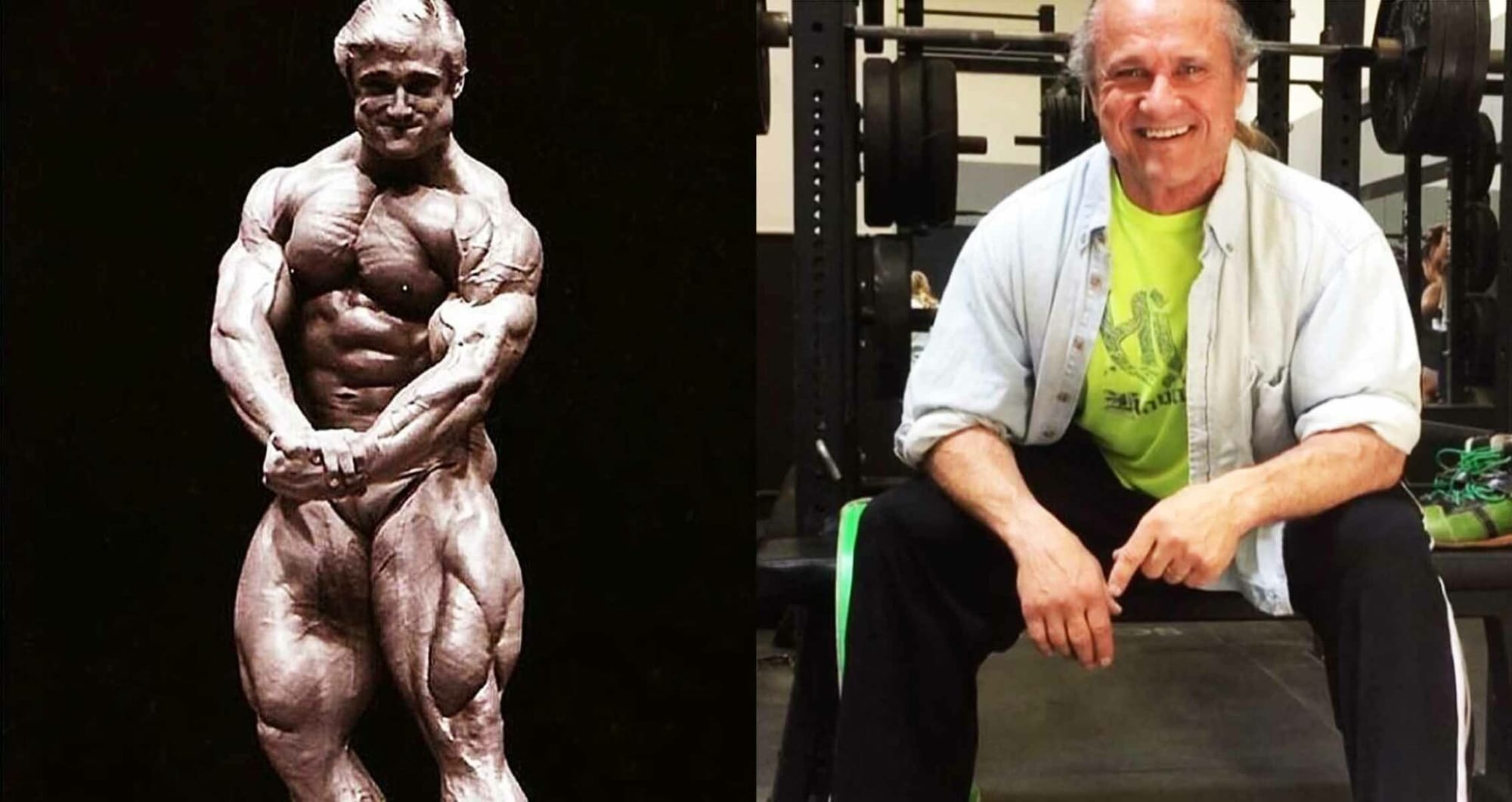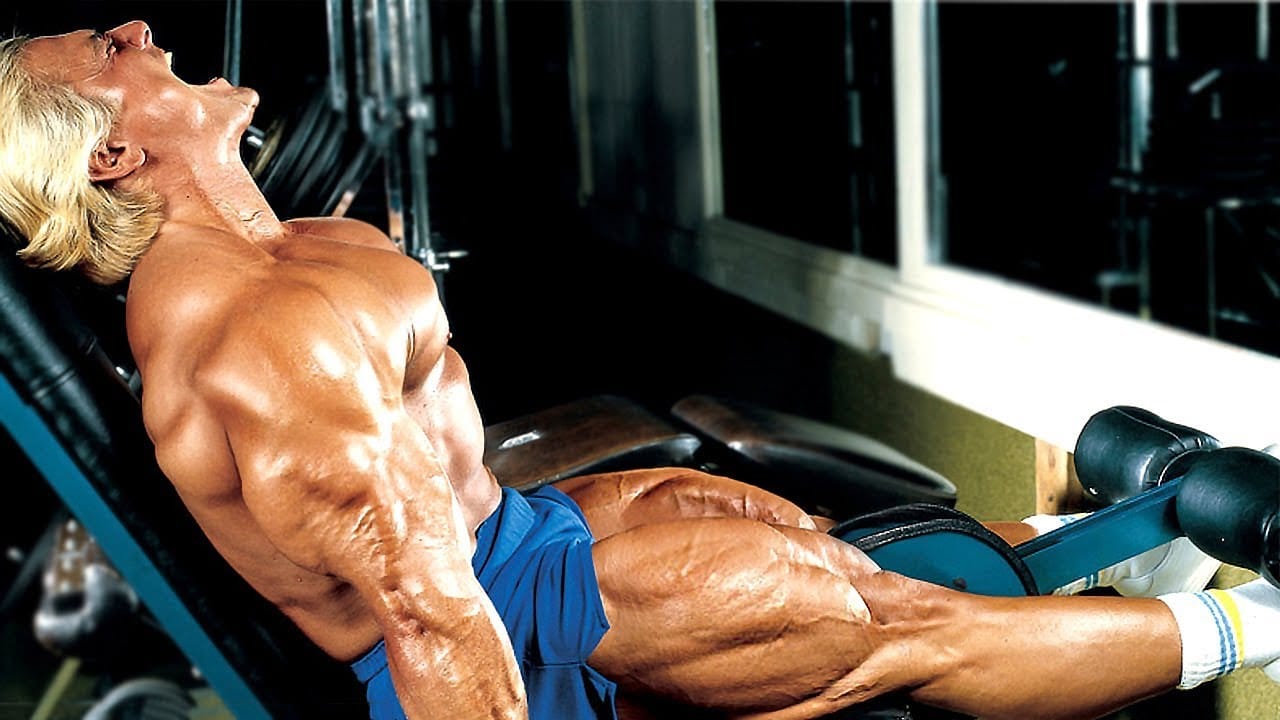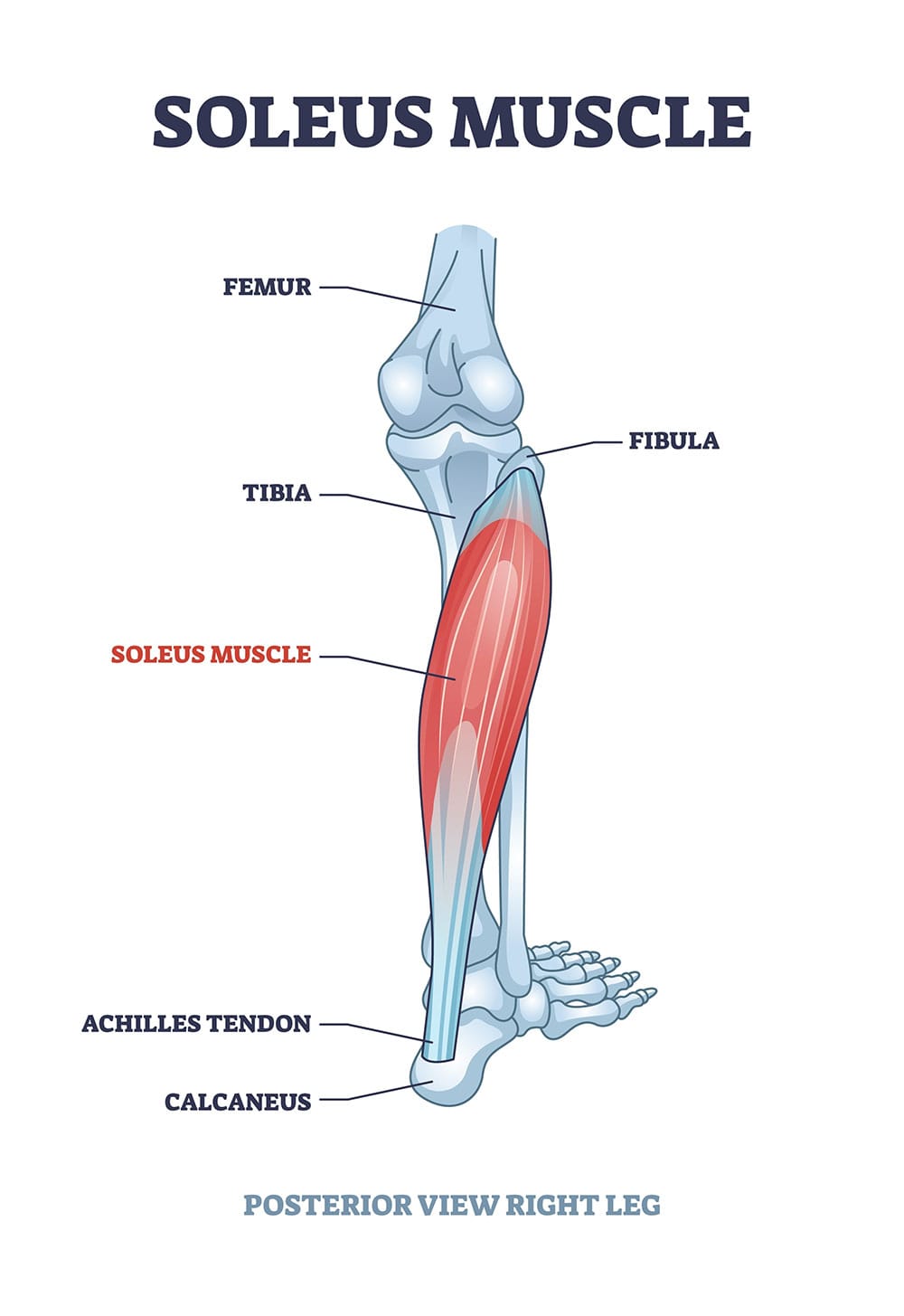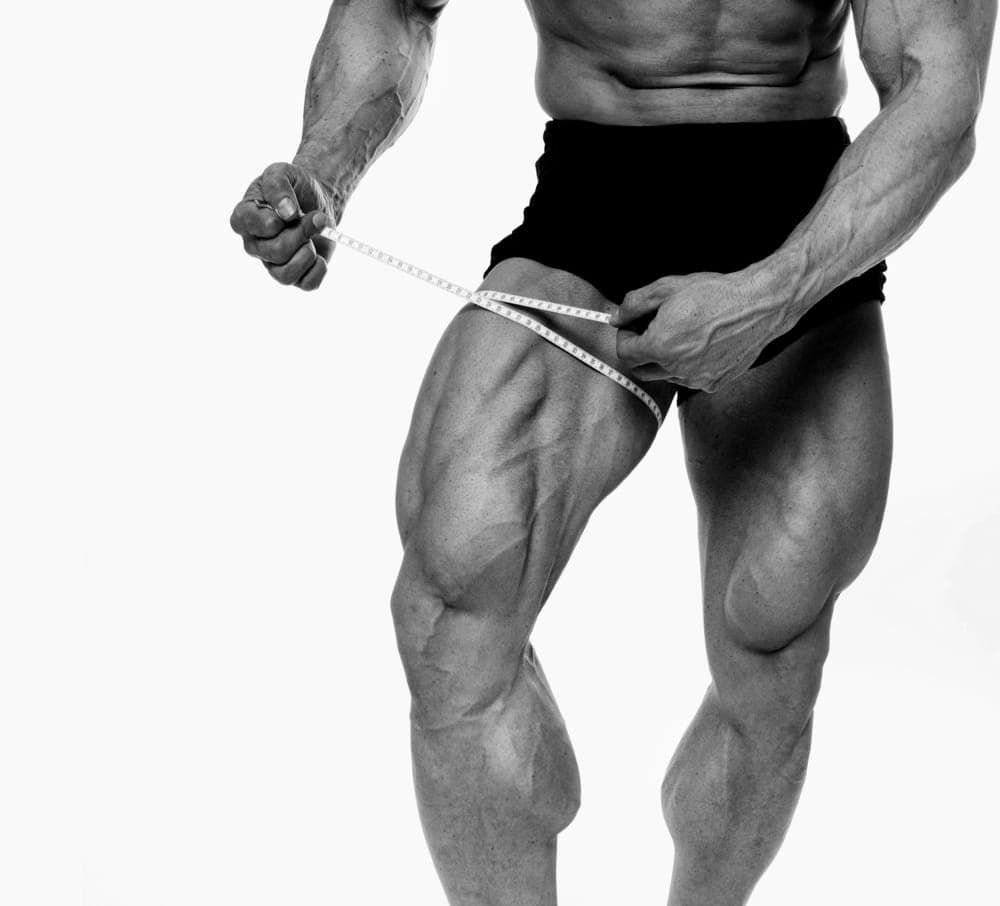Tom Platz Leg Workout: Is It Safe?
Find out what legendary bodybuilder Tom Platz did to get massive legs. Learn how you can adapt the Tom Platz leg workout.
If you’re looking for a workout that will make you say “Oh my quad?”
Look no further than the leg workout done by the Quadfather himself. We’ll give you the skinny on the thighs that were anything but.
This article will help you master the Tom Platz leg workout for massive thighs. Get to know which muscles bodybuilder Tom Platz typically trained and find out how many squat reps he did per session.
Speaking of, which, we’ll unpack whether Tom Platz’s leg workout rep volume is safe for the average Joe.
Who is Tom Platz?

Tom Platz is a retired pro bodybuilder known for his legs of steel.
This man built up some serious tree trunks. He aptly earned the nickname “The Quadfather.”
He was Mr. Universe in 1980. Although he never took home the Mr. Olympia title, Platz was known for his formidable quads throughout the 70s and 80s.
He also helped other bodybuilders to bulk up and even starred in movies.
At 68 years old, Platz is still easily sporting bigger thighs than most guys half his age.
So now that you’re more acquainted with this bodybuilding legend, let's see what kind of workouts Platz was doing to get his legendary legs.
Tom Platz trained for maximum intensity.
The tougher a workout was, the better, as Platz saw it.
Nothing was too big or too heavy. No rep count was too many. This man simply buckled down and put in the work.
Platz would crush crazy feats like squatting 500 pounds for reps or even squatting for 10 minutes straight with no rest.
He was a “more is more” type of guy and his legs clearly showed the results of that training style.
Let’s see which muscles Platz’s workout routine helped to grow.
Tom Platz Leg Workout Muscles Worked
Quads
He wouldn’t be the Quadfather without his gargantuan quads.
Located on the front of your thighs, the quadriceps femoris, aka “quads” extend your hips at the knee joints. These large muscles also help to keep your knees stable.
For knockout moves like Tom Platz’s knees-over-toes hack squat variation (we’ll get to that later), some serious knee strength was required to avoid injuries, so strong quads were a no-brainer.
Glutes
One of the other major lower body muscles that Platz trained with his leg workout was the glutes. He was known for squatting up to 500 pounds, so you can imagine Tom Platz had some insanely strong glutes.
The gluteal muscles or “glutes,” aka your butt is made up of the gluteus maximus, gluteus medius and gluteus minimus. This muscle group is the largest in your body. The glutes help power your body forward. They’re also responsible for postural elements like proper pelvic alignment.
And they can look pretty good too!
For more ways to work the glutes, check out:
Hamstrings
Although he was the Quadfather, Platz wasn’t known to skip a blast to the hamstrings. These muscles on the backs of your legs allow you to extend your legs backward and bend your knees.
For explosive exercises like running and jumping, hamstrings play a crucial role. But because they’re so used in the motions of everyday life, hamstrings are one of the most susceptible muscles to injury.
Hamstring injury is most prevalent among athletes, but many people regardless of activity level suffer from poor hamstring mobility in general.
Tom Platz Leg Workout Plan
Although Platz switched things up, one staple became consistent in his leg workout methods: lots of reps.
Platz allegedly performed:
- Back squats: 8-12 sets x 5-20 reps
- Hack squats: 5 sets, 10-15 reps
- Leg extension: 5-8 sets, 10-15 reps
- Leg curls: 6-10 sets, 10-15 reps
- Standing calf raises: 3-4 sets, 10-15 reps
- Seated calf raises: 3-4 sets, 10-15 reps
For even the most experienced lifters, that’s some crazy volume. Adding tons of volume to your sets is a great way to work toward hypertrophy (muscle growth).
Give this a read to learn more about growing your muscles:
Squats
You’re probably used to training something like 4-6 sets of 5-8 squat reps.
The “king of exercises” is known as a move where it’s better to go heavier for fewer reps if you want to progress your strength. For hypertrophy training, you’d see a higher rep range at lighter weights, but probably nothing compared to the sheer volume of squats that Tom Platz was used to doing.
Most famously, Platz was known for cranking out tons of squat reps. Generally, he would take this exercise to failure, even on heavier reps.
Many factors such as trunk positioning, head positioning, mobility and stability can limit your back squat performance.
Platz seems to have optimized his squats in the perfect way to make enormous reps look like a breeze.
Hack Squats

Platz was known for creating the unique Tom Platz hack squat variation. Here, he would rise onto the balls of his feet and send his knees over his toes.
He used this variation to put extra tension on the quads. And hey! It certainly seems to have worked. This technique isn’t recommended for most people, as it puts too much tension on the knees.
Leg Extension
Take a look at this video of Tom Platz’s leg extension workout.
Relatable, right? With how hard he hammers his quads, you’d have to be screaming in pain.
Although it’s generally not advisable to push yourself THAT far, a little challenge is what creates the best changes.
Platz absolutely destroyed his quads with heavy weight and high reps on the leg extension machine.
Leg Curls
With all that quad work, Platz had to balance things out by strengthening his hamstrings. The leg curl machine is an ideal way to strengthen the backs of your legs.
The hamstrings are powerful muscles that tend to carry a lot of tension. So if you do attempt the Tom Platz leg workout for hamstrings always remember to stretch just as hard as you strengthen.
Standing Calf Raises
Calf raises are some of the best gastrocnemius and soleus exercises for the lower legs. Platz only trained his calves 2x per week, but he was known for having massive soleus muscles.
This is because he adapted his technique to target the soleus muscles more directly.

Seated Calf Raises
On the seated calf raise machine, as well as the standing, Platz added massive weights to act as a finisher for his calves.
The reason his calves got so big? Tom Platz used a technique called static holds. This is a method where you simply hold the weight in one spot without moving it.
Why are static holds so hard? For this move to be beneficial, you have to hold your weight at the toughest part of the movement. Platz’s calves wouldn’t be in a high or low enough position on the machine to offer relief.
They were at that perfect middle point where there was only tension.
“My goal was to just hold the weight at the end of my workout. Many workouts I would just hold the weight, not up high. Not real low, but in the middle. I would just hold it. Imagine just holding 1000 or 2000 pounds at the end of your routine, just holding it still until I could barely hold it.”
-Tom Platz
Did Tom Platz Take Steroids?
Platz was open about his steroid use when he entered the Mr. Olympia contest. He claims to have taken minimal doses of Winstrol (anabolic steroid) and Deca-durabolin.
Is the Tom Platz Leg Workout Safe?
For most people, it’s not recommended to perform as many reps as Tom Platz would have at the peak of his competitive bodybuilding days.
Challenging yourself is a great incentive to increase your rep range and it can help you push through plateaus.
But chances are, competitive athletes like Platz or others like Herschel Walker in his workouts had heavy guidance from trainers and coaches.
For the average person at the gym, the Tom Platz leg workout is probably not safe using the exact rep and weight counts that he did. But that doesn’t mean that a similar training style can’t get you jacked legs.
Although the reps are not unreasonable, they are fairly high for most exercises. That being said, if you reduce your weight a bit, you can work towards mirroring the way Platz trains his legs.
All we ask is that you’re not trying 500-pound squat reps if you’re a newbie!
In Summary…
As a whole, throwing your typical leg day aside and adopting the full Tom Platz leg workout is probably not going to get you the results you want.
Instead? You’re probably looking at sending your legs into agony from overworking if you try to take on this workout plan using heavy weights right away.
Yikes.
To be beneficial, training needs to be sustainable and progressive. It’s important to scale up the volume of your workouts. In fact, we recommend it.
With this in mind, don’t push beyond what you’re capable of right away. A high-rep leg routine is great if you’re adding a few extra reps per session.
Once you master your form and technique on staple exercises like the squat, hack squat and leg curl machine, there’s no reason you can’t up your reps to a similar level.
Take things slowly and make sure to progress through perfect reps before you max out your volume. Slow and steady with good form is better over time than “more is more.”
Do you want to train like a superstar? Work toward the body of your dreams with these simple celebrity-inspired programs.
- Spiderman Physique
- Daniel Craig Workout
- Charlie Hunnam Workout
- Male Gymnast Body
References
Krzysztofik, M., Wilk, M., Wojdała, G., & Gołaś, A. (2019). Maximizing Muscle Hypertrophy: A Systematic Review of Advanced Resistance Training Techniques and Methods. International journal of environmental research and public health, 16(24), 4897. https://doi.org/10.3390/ijerph16244897
Myer, G. D., Kushner, A. M., Brent, J. L., Schoenfeld, B. J., Hugentobler, J., Lloyd, R. S., Vermeil, A., Chu, D. A., Harbin, J., & McGill, S. M. (2014). The back squat: A proposed assessment of functional deficits and technical factors that limit performance. Strength and conditioning journal, 36(6), 4–27. https://doi.org/10.1519/SSC.0000000000000103
Poudel B, Pandey S. Hamstring Injury. [Updated 2023 Aug 8]. In: StatPearls [Internet]. Treasure Island (FL): StatPearls Publishing; 2024 Jan-. Available from: https://www.ncbi.nlm.nih.gov/books/NBK558936/
Related articles


Get fit with Flex
Build muscle & lose weight fast for free.
Available on iPhone + Apple Watch





